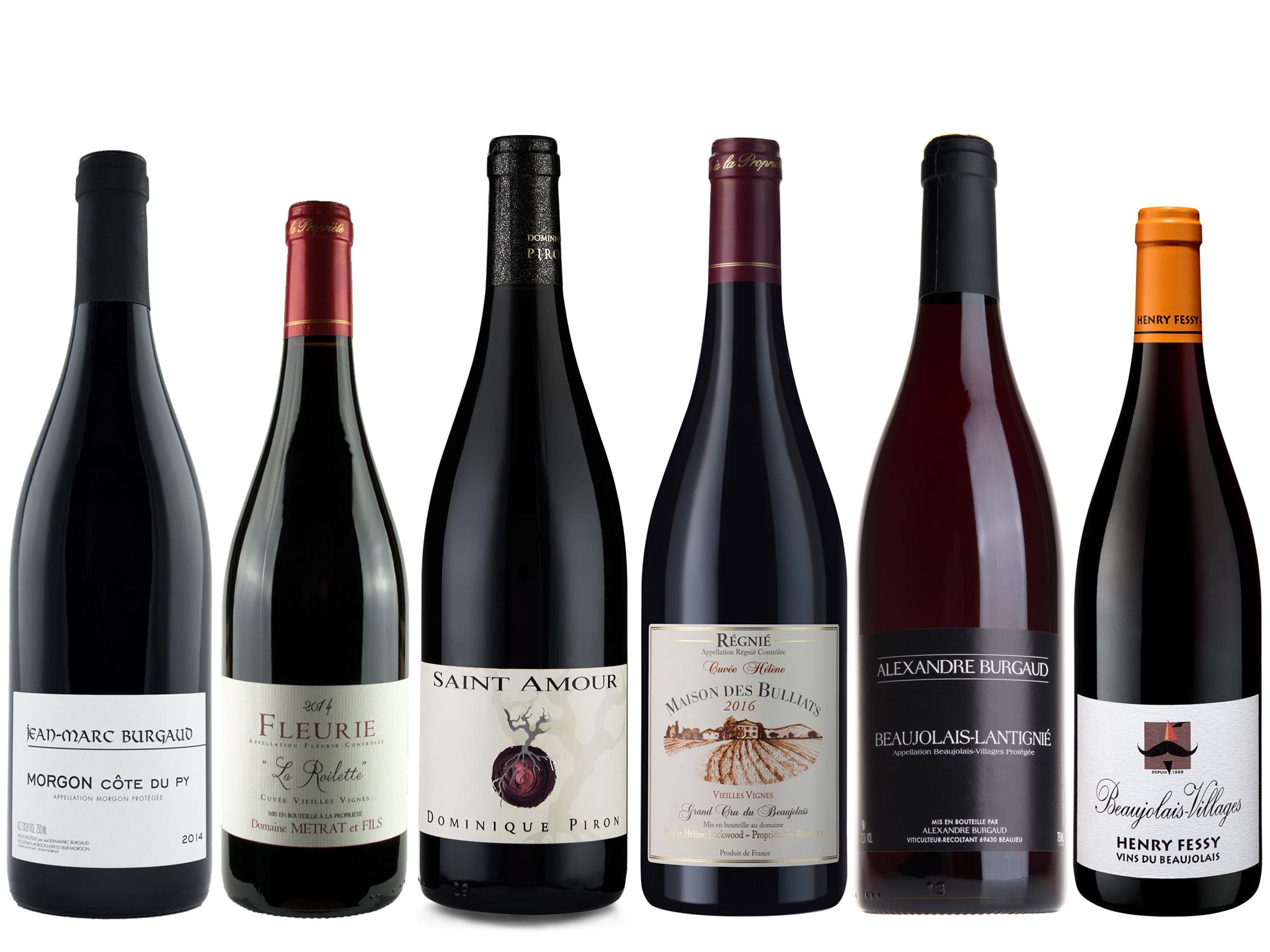The Independent's journalism is supported by our readers. When you purchase through links on our site, we may earn commission.
Wines of the week: Six bottles for Beaujolais Nouveau Day
The tired marketing stunt that is Beajolais Nouveau Day is almost upon us, but who wants chilled reds in November? Fortunately the region offers far more interesting tipples to try, says Terry Kirby

This coming Thursday is Beaujolais Nouveau Day and the excitement is, er, mounting. Or not. Since its heyday in the late 1980s, interest in this annual marketing wheeze for the first release of the fresh young wine made from gamay grapes, picked just a few weeks previously in the Beaujolais region of France, has declined massively.
While it’s still a bit of a thing in France, there are no longer any competitions to get the wine to the UK as soon as possible by trains planes and cars after its release at midnight on the third Thursday in November. And we consume a fraction of what we did at the peak, apart from, curiously, South Wales and particularly Swansea where the event has become an embedded local tradition and, even more curiously, in Japan, which imports around seven million bottles, compared to say, the UK’s 300,000.
Reasons for the decline were simple: enthusiasm was eventually dampened by a glut of a poor quality, mass-produced plonk, which tasted thin and acidic and, even at its best, this is a light, fruity, fresh wine, best drunk chilled: who wants that in the middle of a cold and damp British November? And as wine tastes broadened, we discovered different wines and the New World.
What both the fuss and subsequent disenchantment with the wine obscured – and which the area is now anxious to celebrate – are the glorious wines of the Beaujolais Villages AOC region and in particular the 10 villages accorded cru status, each of which have their own distinctive, beguiling and subtly different qualities determined by the work of individual producers and combinations of soil and climate which create elegant, seductive wines. And they are not allowed to produce nouveau, which comes from the broader region; most don’t actually mention Beaujolais very much on their labels.
So which Beaujolais wines should you be racing to try?
Regnie, the most recent cru to be recognised, in 1988, is one of the villages to produce lighter wines and was also allegedly where some of the first vines of the region were planted, by the Romans. The old vines used by an Anglo-Canadian husband and wife team to make Cuvee Helene Maison Des Bulliats, Regnie 2016 (£12.99 Laithwaites.co.uk) may not date back that far but they impart an intensity to this wine’s succulent, brambly fruit flavours. In summer, this would be better slightly chilled, but in winter, drink cool – ie from a cellar or pantry – with chicken, charcuterie and robust fish dishes.
The 2015 vintage was widely recognised as one of the best for years, producing wines that were generally riper and rich than most. For a great example try the Bernard Metrat Fleurie La Roilette Cuvee Vieilles Vignes 2015 (£14.75 Agwines.com; £14.99 Twelvegreenbottleswine.co.uk) – more old vines and brambly fruit again, this time from the village of Fleurie, but delivering a focused, wine, with plenty of tannic structure and shot through with the characteristic supple freshness that makes all these wines so drinkable. Drink now, with full flavoured foods and hard cheeses but will get better over the next few years. From the equally gorgeously named village of Saint Amour comes another 2015 gem, the Piron St Amour (£13 Marksandspencers.com) which is lighter bodied and has fresh, crisp flavours of red fruit and a touch of spice, making it ideal, as M&S recommend, for seared tuna. Again, drink cool for better effect.
The wines of the Morgon cru are among the heavier of the region and the hillside of Cote du Py, where the soil is schist, rather than the dominant granite, is said to be where the richest and earthiest wines are produced. The Domaine Jean-Marc Burgaud, Morgon Côte du Py 2014 (£12.95 Thewinesociety.com) is powerful, concentrated and elegant and from a highly rated producer.
Not all Beaujolais villages are accorded cru status, but many aspire to it, including the village of Lantignié, north of Regnie, where the soils are said to be similar to those of the Cote de Py and which may lead to it being awarded the accolade in the future. Here, Burgaud’s cousin Alexandre creates his own distinctive wines, where the dominant flavours are of black fruits; Alexandre Burgaud Beaujolais-Villages Lantignié, 2015 (£10.95 Bbr.com) is also, at 14% ABV, at least 1.5% higher in alcohol than other Beaujolais wines. But as a 2015 bottling, at this price, it’s a bargain and a great wine to stock up for the festive season.
Can’t decide which cru might deserve your cash? Then try the excellent Henry Fessy Beaujolais Villages 2015 (£10.00 Bcfw.co.uk) from a very reliable producer (who also do some excellent cru wines) and made with grapes drawn from a number of villages in the north of the region; its floral, juicy, supple flavours should soon convert you to the real wines of the region. Even if you are from Swansea...
Subscribe to Independent Premium to bookmark this article
Want to bookmark your favourite articles and stories to read or reference later? Start your Independent Premium subscription today.

Join our commenting forum
Join thought-provoking conversations, follow other Independent readers and see their replies